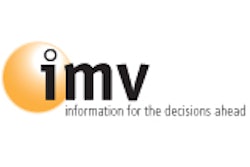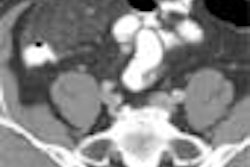During the past several years, cardiovascular computed tomography angiography (CVCTA) has become the rage throughout the diagnostic imaging industry. Centers are racing to develop and offer cutting-edge programs in their marketplaces, and are vying to be the first to successfully do so.
The introduction of 64-slice CT technology, and the 3D workstations that complement them, has propelled the industry to new levels, allowing center operators, radiologists, and cardiologists to offer and perform studies they couldn't do previously with 16-slice and other earlier-stage scanners. These technology advancements are helping centers set and reach new operational and financial goals and objectives.
According to the "2004 CT Census Market Summary Report" by IMV Medical Information Division of Des Plaines, IL, the cardiac CT market will reach in excess of $350 million in U.S. sales by this year's end. The report holds that 64-slice CT sales are quickly rising, totaling about $1.2 billion in the market; and sales of CT systems with greater than 16-slice capabilities in 2005 grew by a whopping 187.5%.
How can center operators, radiologists, and cardiologists work together to support, nurture, and drive this explosive growth and anticipated acceptance?
CVCTA is clearly becoming a more widely embraced and clinically approved procedure throughout both the cardiology and radiology communities. In fact, CTA scans totaled about 6 million in 2005, according to studies provided by Malvern, PA-based Siemens Medical Solutions, and is expected to reach about 8 million in 2006. Demographics point toward a 5% to 20% increase in the audience ripe for this type of service over the next five years, according to Washington, DC-based healthcare research firm Advisory Board Company.
This explosive growth and new technology doesn't mean that a CVCTA program can be automatically successful. Several challenges must be conquered to achieve this.
As an early adopter of cardiac imaging, our firm has faced many of the same challenges that other CVCTA providers have experienced during recent years. The primary challenge has always been reimbursement by insurance carriers. The secondary challenge has been the acceptance of the eight-slice, 16-slice, and now 64-slice CT scanners and their workstations as a quality diagnostic tool to identify cardiac disease. With today's 64-slice CT scanners and workstations, the industry is proving that CTA is an excellent alternative to a traditional angiogram.
Today the greatest challenge in marketing CVCTA remains the reimbursement landscape, and attempting to convince commercial payers and local independent physician associations (IPAs) about the value of this procedure. Experts believe it will take at least a year to persuade many carriers that CVCTA coverage for their patients will save money in the long run, and that it will not become an overutilized benefit.
Insurers may fear they are opening the floodgates with respect to CVCTA reimbursement. With Medicare now publishing ICD-9 codes for payments, local providers have a foundation. The guidelines set forth by National Heritage Insurance (NHIC), a Medicare subcontractor, and the Centers for Medicare and Medicaid Services (CMS) for payment are stringent and will be scrutinized heavily this first year of implementation, which began on November 27, 2006. Indications and limitations relating to coverage can be found on the NHIC Web site.
To be reimbursed by an insurance provider, the patient must meet a certain set of criteria and demonstrate that less expensive testing they have undergone had proved inefficient. This essentially means that providers will have to focus on proper documentation and build a strong billing team to get paid for services rendered.
Billing insurers for CVCTA will also be involved in a learning process during the next 12 months. Communication to and from the billing department, front office staff, radiologists, and referring physicians will be critical for effective reimbursement.
Automating the billing function is also integral to CVCTA reimbursement. Working with other noncompetitive sites offering CVCTA programs and sharing billing, coding, and payor information will prove very effective in ensuring clean claims.
In addition to reimbursement challenges, many providers will continue to face -- and attempt to overcome -- major hurdles in terms of marketing CVCTA in the areas of education, perception, and politics.
For cardiologists, three challenges come to mind that are the greatest influences on their ability to participate in successful CVCTA studies.
Education: A real concern in the industry today is how much knowledge the cardiologist has of both the exam and its benefits. While many have attended educational programs or read articles regarding how CVCTA can be productively incorporated into their practices, many are still not referring patients. Most require more education to be prepared to participate. Offering continuing medical education (CME) credit and open houses to local cardiologists so they can see the technology's usefulness has proved to be a powerful marketing tool.
The same holds true for many radiologists entering the CVCTA world. The key here is for centers to diligently work toward providing education and commit to offering CME. This will help attract local cardiologists and encourage them to participate and learn how to appropriately refer patients.
Perception: Much of the ambiguity associated with CVCTA programs for cardiologists lies with their perception of such studies. What is a better choice: CTA versus angiogram? Will a cardiologist lose revenue by sending a patient for a CTA instead of an angiogram? Is the cardiologist fond of the time spent in the cath lab away from the office? Do they feel threatened by the ways in which CTA will impact their need to learn a new skill set -- one that is virtually dependent on computers? It certainly takes time to wade through 3,000-4,000 images, and many cardiologists are unwilling to devote that kind of time and energy to read CVCTA studies. Interpreting these studies will become faster for radiologists and cardiologists as their skill sets improve and software advancements speed the delivery of images.
Politics: Certain political-oriented issues can arise when considering CVCTA programs, such as where will the patient be scanned and, more importantly, who will be reading the scan? The political concern relating to who will read the scan is actually what deters many cardiologists from referring their patients. Even cardiologists in the same practice seem resistant to send their patient to another cardiologist in their group who will read their patient's exam. This can result in reluctance on the part of the cardiologist and, ultimately, turf wars among local communities.
For internists, clearly the most prevalent challenge is education. The implementation of CVCTA is new to the internist community and reflects on their referral habits. As indicated earlier, strong educational efforts are necessary to make these physicians aware of diagnoses criteria and the practical applications for CTA.
Most referrals by internists stem from those who have more aggressive imaging referral habits and also from "concierge" practices that boast patients that are able to afford the exam. Marketing can be affected by the political situation if an internist refers patients to a cardiologist who does not support or promote the benefits of CVCTA.
In sum, the real key first step to CVCTA marketing is education. With reimbursement scheduled to come into effect soon, education and communication will certainly play a crucial role in the success of these programs.
Next, a center needs to align with the right cardiologists who can interpret the exams to ensure adequate coverage, both logistically and politically. The more cardiologists the better, as they are the source of the referrals. Thin-client reading software allows many cardiologists to work hand-in-hand with the radiologist to render a quality diagnosis and build a strong program.
This foundation should prepare any center operator for success in the CVCTA market.
By Steven Renard
AuntMinnie.com contributing writer
January 7, 2007
Renard is president and chief operating officer of Encino, CA-based Liberty Pacific Medical Imaging (LPMI). LPMI develops, owns, and operates medical diagnostic imaging centers, primarily in Northern and Southern California, and offers medical development and management consulting services through its Liberty Pacific Medical Management subsidiary. Renard can be contacted via the LPMI Web site or at 916-773-0211.
Related Reading
How to win the coronary CTA turf war, October 9, 2006
More data will be key to CTA reimbursement, September 6, 2006
Cardiac imaging: The battle for reimbursement, August 4, 2006
Calcium CT scoring loss leader drives downstream benefit, August 3, 2006
More research needed to gauge CTA's benefits, August 1, 2006
Copyright © 2007 Liberty Pacific Medical Imaging
Disclosure notice: AuntMinnie.com is owned by IMV, Ltd.




















